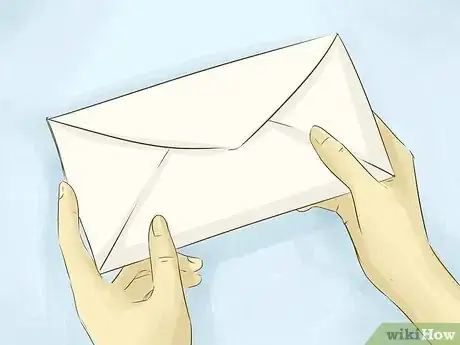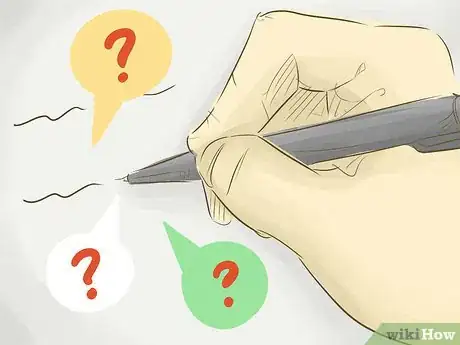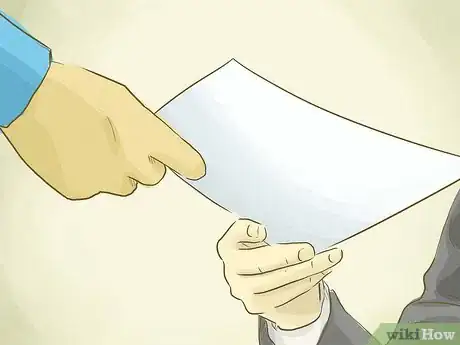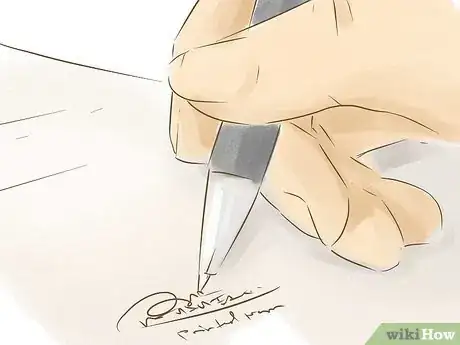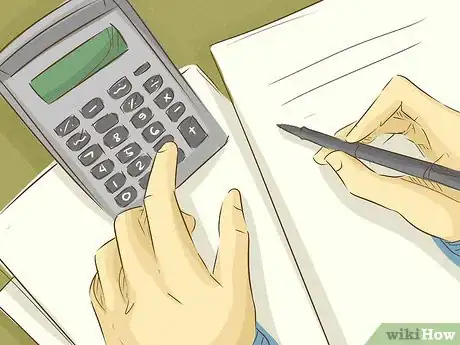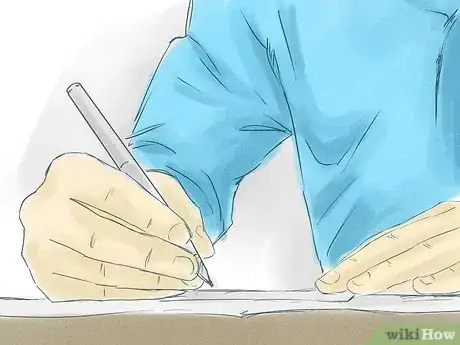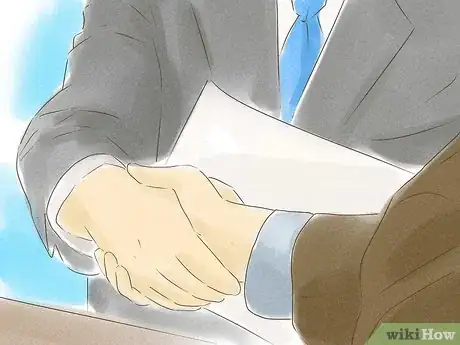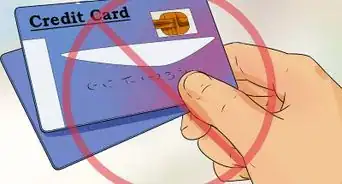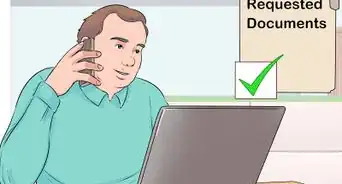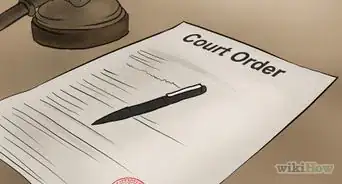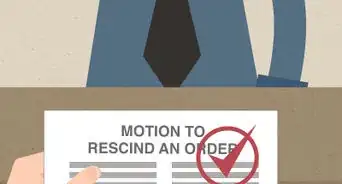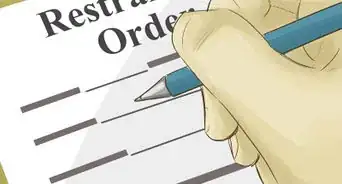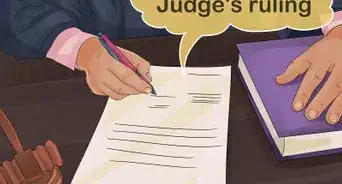This article was written by Jennifer Mueller, JD. Jennifer Mueller is an in-house legal expert at wikiHow. Jennifer reviews, fact-checks, and evaluates wikiHow's legal content to ensure thoroughness and accuracy. She received her JD from Indiana University Maurer School of Law in 2006.
There are 9 references cited in this article, which can be found at the bottom of the page.
wikiHow marks an article as reader-approved once it receives enough positive feedback. In this case, 84% of readers who voted found the article helpful, earning it our reader-approved status.
This article has been viewed 114,730 times.
If you win a lawsuit against someone, you have the right to collect the judgment amount from that person. However, the court won't go after the defendant for you – it's your responsibility to collect your judgment. Sometimes defendants will simply pay the judgment against them, but often you must take additional steps to collect your money. One of the methods you can use, which is available in most states, is wage garnishment. Although the specifics vary greatly among jurisdictions, the general process for garnishing wages is similar.[1]
Steps
Preparing Your Application and Affidavit
-
1Contact the defendant. The threat of wage garnishment often provides enough incentive for the defendant to pay the judgment.[2]
- Before you file your application to garnish the defendant's wages, send him or her a letter explaining that you are willing to take steps to collect the judgment unless the defendant pays in full or makes arrangements with you to pay installments.
- Give the defendant a deadline by which he or she must respond to your letter. If you get no response, go forward with the wage garnishment.
-
2Contact the clerk of court. The clerk of the court where your lawsuit was heard will be able to provide you with specifics on how to collect your judgment.
- In some jurisdictions you can begin taking action to collect your judgment as soon as it is entered, while in others you must wait until the deadline to appeal has passed. Typically the defendant has between two weeks and a month to file an appeal of the judgment.[3] [4] [5]
- Wage garnishment is available if the defendant receives regular wages that are above the poverty line, and he or she doesn't already have other garnishments in effect.[6]
- You only have a certain period of time to collect on your judgment. For example, Nevada judgments are only good for six years from the date they are entered. After that period runs out, you must file a motion to renew the judgment before you can take action to collect.[7]
- This time period varies depending on the state and the court. For example, a judgment from a Colorado County Court is good for six years, while a judgment from a Colorado District Court is good for 20 years.[8]
Advertisement -
3Get an application and affidavit for a writ of garnishment. Typically you must fill out an application to begin the wage garnishment process.
- You can get the forms you need from the clerk of the court where your case was heard. You also may be able to find copies online that you can download and fill out on your computer. Check the website of the clerk's office or the state judicial department.[9]
- When you get your application, you also must get a certified copy of the court's order to attach to your application.[10]
- You will have to pay a fee to the clerk for a certified copy of the court order, typically around $20.[11]
-
4Prepare your interrogatories. Interrogatories are written questions that must be answered under oath to provide you reliable information about the defendant's employment for purposes of garnishment.
- To complete your application for a writ of garnishment, you must have the name and address of the defendant's employer.[12] [13]
- The defendant must answer these questions completely and honestly, and is considered to be under oath when writing his or her responses.[14] [15]
- Keep in mind that some states such as Missouri do not allow you to file post-judgment interrogatories. Without this tool, you may have difficulty determining where the defendant works and how much money he or she makes.
- In some states, the interrogatories are sent to the defendant, while in others, you must send interrogatories to the defendant's employer. The types of questions you ask will differ depending on whether the defendant or the defendant's employer is expected to respond. Each state typically has a packet of documents available that includes sample interrogatories that are pre-approved by the court for use in wage garnishment.[16]
- Research your state's law to find out what exemptions your state recognizes. Then ask the appropriate questions to determine whether the defendant's wages are protected by an exemption. For example, many states provide a "head of household" exemption for the wages of anyone who provides more than 50 percent of the support for a dependent such as a child.[17] [18]
- You also should find out if the defendant's wages already are subject to another garnishment. Generally you can garnish no more than 25 percent of the defendant's wages, so if he or she has another garnishment in effect, that would lessen if not eliminate your ability to garnish those wages.
- For example, if the defendant already has a garnishment in effect for 10 percent of her wages, you could only garnish 15 percent to cover your judgment.[19]
- The only garnishments not subject to this 25 percent cap are to collect alimony or child support.[20]
-
5File your interrogatories. Filing your answers with the court enables you to use court processes to compel the defendant to answer the questions should he or she refuse.
- Make at least two copies – one to serve on the defendant and one for your records – as the court will keep the originals when you file.
- Once you've completed and filed your interrogatories, you must have them served on the defendant.
- The court may allow you to automatically issue certain interrogatories related to collection with the judgment order without requiring any additional steps or filing. Typically the types of questions you can ask are limited. If you want to use questions other than those pre-approved by the courts, you must submit them to the judge for approval before you can send them to the defendant.[21]
- When you file your interrogatories, typically the clerk will mail them to the defendant for you if you ask. You will have to pay a fee to cover the cost of postage.[22]
-
6Wait for a response to your interrogatories. The defendant will have a certain amount of time to return the interrogatories to you.
- Your interrogatories should include a deadline by which the defendant must respond.[23] Typically this deadline will be 10 or 15 days. The amount of time the defendant has to respond to your interrogatories can be found in your state's rules of civil procedure.
- If the defendant refuses to answer your interrogatories, you can ask the court to hold him or her in contempt.[24] The judge may first issue an order compelling the defendant to respond to your interrogatories, and providing an additional deadline.
- In some jurisdictions you must file and serve the interrogatories at the same time you file your application. The clerk will be able to tell you which forms are necessary to begin the garnishment process in that court.
-
7Complete your application and affidavit. Use the information you acquired from the defendant's answers to your interrogatories to complete your application to garnish the defendant's wages.
- On these documents, you must list the original amount of the judgment entered by the judge in your case, as well as any additional costs or interest you are allowed to charge.[25]
- You must include your calculation of the total amount to be garnished from the defendant's wages, which generally will be the original amount of the judgment plus any interest and additional costs, minus any amount the defendant has already paid you.[26]
- You also need to identify the defendant's employer and provide a complete address where the employer is located so your writ of garnishment can be served on the defendant's employer.
Getting a Writ of Garnishment
-
1Sign your application and affidavit. Typically you must sign your application and affidavit in the presence of a notary.
-
2File your application and affidavit with the clerk of court. Once you've completed and signed your application you must file it with the clerk for the same court where your judgment was entered.
- You must pay a filing fee when you file your application and affidavit, typically under $100. You can add the filing fee to the total amount you'll be collecting from the defendant.[29] [30]
- In some jurisdictions, you may be able to file your application and affidavit electronically and avoid a trip to the courthouse.
-
3Ask the clerk for a writ of garnishment. A writ of garnishment tells the defendant's employer that he or she must withhold a certain amount of money from the defendant's paycheck.
-
4Have the writ of garnishment served on the defendant's employer. You must contact the sheriff's department in the county where the defendant's employer is located to serve the writ and begin the garnishment process.[33]
- You typically will have to pay the sheriff's department a small fee up front to serve your writ of garnishment.[34]
- In some jurisdictions you also will have a notice form. Typically you don't have to fill out anything on this form, it simply tells the defendant that his or her wages are being garnished and outlines the rights of judgment debtors.[35]
- If the defendant objects to the garnishment or believes his wages are exempt, he may file a claim of exemption with the court that issued the writ.[36]
- The defendant also can avoid the garnishment by paying the total amount of the judgment directly to the sheriff's department that served the writ.[37]
Tracking Collection of Your Judgment
-
1Calculate how many payments will satisfy the judgment. Use the information from the defendant's answers to your interrogatories to determine how long it will take the defendant to pay off his or her debt to you.
- If the defendant already has another garnishment, you often must wait until that garnishment expires before yours will begin.[38]
- The writ of garnishment will be in effect for a certain period of time, typically 120 days, or until the judgment is satisfied. If the period ends and the defendant still owes you money, you will have to refile your application and have the garnishment renewed.[39]
- Some jurisdictions allow you to set the length of time the garnishment will be in effect. If the defendant owes you a relatively small amount of money, you may want to limit the period of time the garnishment is in effect if you have the ability to do so in your jurisdiction.
- You also must calculate the total amount that will satisfy the judgment. You can collect judgment interest at the legal rate. While you can find out the legal rate from the clerk, neither the clerk of court nor the sheriff's department will calculate this amount for you.[40]
-
2Complete a satisfaction of judgment form. Once the judgment has been satisfied, you must let the court know.
- Typically you can get a satisfaction of judgment form from the court clerk.[41] [42]
- State law typically requires you to provide notice to the court that the judgment has been paid. Additionally, unsatisfied judgments reflect badly on the defendant's credit report.[43]
- You may be required to attach some proof that the judgment has been satisfied, such as receipts, garnishment records, or cancelled checks.[44]
- Your satisfaction of judgment form must be filed with the clerk of the same court where the judgment was entered and your writ of garnishment was issued.[45]
-
3Have the satisfaction of judgment served on the defendant's employer. The satisfaction of judgment tells the defendant's employer to stop withholding money from the defendant's paycheck.
- Since the defendant's employer won't end the withholding until he or she receives the satisfaction of judgment, you should have the document served as soon as possible after the judgment has been paid in full to avoid over-payments.[46]
References
- ↑ http://www.nolo.com/legal-encyclopedia/collect-court-judgment-wage-garnishment-30146.html
- ↑ http://www.nolo.com/legal-encyclopedia/collect-court-judgment-wage-garnishment-30146.html
- ↑ https://www.courts.state.co.us/userfiles/file/Self_Help/FAQ's/Garnishments%20and%20Judgments%20FAQs%20.pdf
- ↑ http://www.civillawselfhelpcenter.org/self-help/judgments-for-money/how-to-collect-a-judgment/167-garnishing-wages-or-attaching-bank-accounts
- ↑ http://www.the3rdjudicialdistrict.com/Small_Claim_Pl_Collect.htm
- ↑ http://www.nolo.com/legal-encyclopedia/collect-court-judgment-wage-garnishment-30146.html
- ↑ http://www.civillawselfhelpcenter.org/self-help/judgments-for-money/how-to-collect-a-judgment/167-garnishing-wages-or-attaching-bank-accounts
- ↑ https://www.courts.state.co.us/userfiles/file/Self_Help/FAQ's/Garnishments%20and%20Judgments%20FAQs%20.pdf
- ↑ https://www.courts.state.co.us/Forms/renderForm1.cfm?Form=29
- ↑ http://www.the3rdjudicialdistrict.com/Small_Claim_Pl_Collect.htm
- ↑ https://www.courts.state.co.us/Forms/renderForm1.cfm?Form=29
- ↑ http://www.civillawselfhelpcenter.org/self-help/judgments-for-money/how-to-collect-a-judgment/167-garnishing-wages-or-attaching-bank-accounts
- ↑ https://www.courts.state.co.us/Forms/renderForm1.cfm?Form=29
- ↑ https://www.courts.state.co.us/userfiles/file/Self_Help/FAQ's/Garnishments%20and%20Judgments%20FAQs%20.pdf
- ↑ https://www.courts.state.co.us/Forms/renderForm1.cfm?Form=29
- ↑ hhttps://www.courts.state.co.us/Forms/renderForm1.cfm?Form=29
- ↑ http://www.nolo.com/legal-encyclopedia/collect-court-judgment-wage-garnishment-30146.html
- ↑ http://www.nolo.com/legal-encyclopedia/using-exemptions-protect-your-wages-from-garnishment.html
- ↑ http://www.nolo.com/legal-encyclopedia/collect-court-judgment-wage-garnishment-30146.html
- ↑ http://www.nolo.com/legal-encyclopedia/collect-court-judgment-wage-garnishment-30146.html
- ↑ https://www.courts.state.co.us/Forms/renderForm1.cfm?Form=29
- ↑ https://www.courts.state.co.us/Forms/renderForm1.cfm?Form=29
- ↑ https://www.courts.state.co.us/userfiles/file/Self_Help/FAQ's/Garnishments%20and%20Judgments%20FAQs%20.pdf
- ↑ https://www.courts.state.co.us/userfiles/file/Self_Help/FAQ's/Garnishments%20and%20Judgments%20FAQs%20.pdf
- ↑ https://www.courts.state.co.us/Forms/renderForm1.cfm?Form=29
- ↑ https://www.courts.state.co.us/Forms/renderForm1.cfm?Form=29
- ↑ http://www.civillawselfhelpcenter.org/self-help/judgments-for-money/how-to-collect-a-judgment/167-garnishing-wages-or-attaching-bank-accounts
- ↑ https://www.courts.state.co.us/Forms/renderForm1.cfm?Form=29
- ↑ http://www.civillawselfhelpcenter.org/self-help/judgments-for-money/how-to-collect-a-judgment/167-garnishing-wages-or-attaching-bank-accounts
- ↑ http://www.the3rdjudicialdistrict.com/Small_Claim_Pl_Collect.htm
- ↑ http://www.civillawselfhelpcenter.org/self-help/judgments-for-money/how-to-collect-a-judgment/167-garnishing-wages-or-attaching-bank-accounts
- ↑ https://www.courts.state.co.us/Forms/renderForm1.cfm?Form=29
- ↑ http://www.the3rdjudicialdistrict.com/Small_Claim_Pl_Collect.htm
- ↑ http://www.civillawselfhelpcenter.org/self-help/judgments-for-money/how-to-collect-a-judgment/167-garnishing-wages-or-attaching-bank-accounts
- ↑ http://www.civillawselfhelpcenter.org/self-help/judgments-for-money/how-to-collect-a-judgment/167-garnishing-wages-or-attaching-bank-accounts
- ↑ http://www.alllaw.com/articles/nolo/bankruptcy/wage-garnishment-laws.html
- ↑ http://www.the3rdjudicialdistrict.com/Small_Claim_Pl_Collect.htm
- ↑ https://www.courts.state.co.us/userfiles/file/Self_Help/FAQ's/Garnishments%20and%20Judgments%20FAQs%20.pdf
- ↑ http://www.civillawselfhelpcenter.org/self-help/judgments-for-money/how-to-collect-a-judgment/167-garnishing-wages-or-attaching-bank-accounts
- ↑ http://www.the3rdjudicialdistrict.com/Small_Claim_Pl_Collect.htm
- ↑ http://www.the3rdjudicialdistrict.com/Small_Claim_Pl_Collect.htm
- ↑ http://www.nolo.com/legal-encyclopedia/free-books/small-claims-book/chapter23-3.html
- ↑ http://www.civillawselfhelpcenter.org/self-help/judgments-for-money/how-to-collect-a-judgment/167-garnishing-wages-or-attaching-bank-accounts
- ↑ http://www.nolo.com/legal-encyclopedia/free-books/small-claims-book/chapter23-3.html
- ↑ http://www.nolo.com/legal-encyclopedia/free-books/small-claims-book/chapter23-3.html
- ↑ http://www.nolo.com/legal-encyclopedia/free-books/small-claims-book/chapter23-3.html
